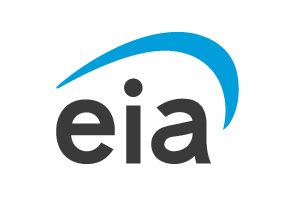BAKU, Azerbaijan, October 16. U.S. liquefied natural gas (LNG) exporters plan to more than double the country’s liquefaction capacity between 2025 and 2029, adding an estimated 13.9 billion cubic feet per day (Bcf/d), according to the U.S. Energy Information Administration (EIA), Trend reports.
The United States, already the world’s largest LNG exporter with 15.4 Bcf/d of capacity, will see most of the expansion concentrated along the Gulf Coast, the largest LNG hub in the Atlantic Basin.
North American LNG export capacity is expected to grow from 11.4 Bcf/d at the start of 2024 to 28.7 Bcf/d by 2029 if all projects under construction begin operations as scheduled. Canadian and Mexican exporters are projected to contribute an additional 2.5 Bcf/d and 0.6 Bcf/d, respectively. The International Energy Agency estimates that North America will account for over half of global LNG capacity additions through 2029.
In the U.S., new pipelines are planned to supply the expanding Gulf Coast terminals, though construction delays remain a key risk. Several projects are under construction following final investment decisions, including Port Arthur LNG Phase 1 (1.6 Bcf/d), Rio Grande LNG (2.1 Bcf/d), Woodside Louisiana LNG (2.2 Bcf/d), Golden Pass LNG (2.1 Bcf/d), and CP2 Phase 1 (2.0 Bcf/d). Plaquemines LNG and Corpus Christi Stage III have already shipped cargoes but have not yet begun full commercial operations.
Canada’s LNG export growth is centered on the west coast, shortening shipping times to Asia by roughly 50% compared with U.S. Gulf Coast exports. LNG Canada, the country’s first terminal, shipped its first cargo in July 2025 and is expected to reach full capacity of 1.84 Bcf/d by 2026. A proposed second phase would double the capacity to 3.68 Bcf/d after 2029. Additional projects under construction include Woodfibre LNG (0.3 Bcf/d, expected 2027) and Cedar LNG (0.4 Bcf/d, expected 2028).
Mexico is developing two LNG export projects totaling 0.6 Bcf/d: Fast LNG Altamira FLNG2 (0.2 Bcf/d) on the east coast and Energía Costa Azul (0.4 Bcf/d) on the west coast. Both projects will source feedgas from U.S. pipelines, with Mexico producing its first LNG cargo aboard Fast LNG Altamira FLNG1 in August 2024.







